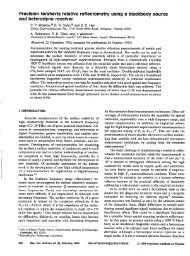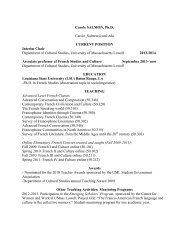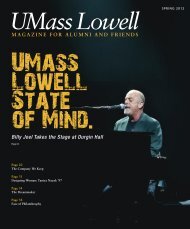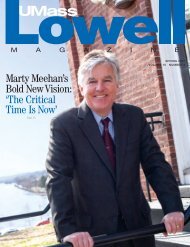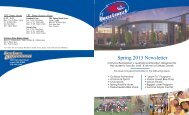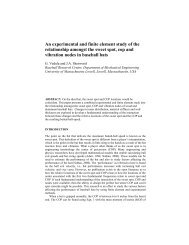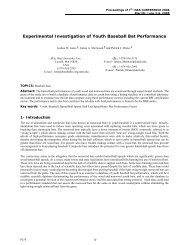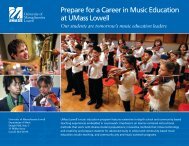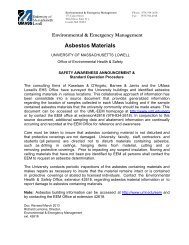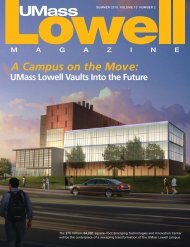comprehensive campus transportation plan - University of ...
comprehensive campus transportation plan - University of ...
comprehensive campus transportation plan - University of ...
Create successful ePaper yourself
Turn your PDF publications into a flip-book with our unique Google optimized e-Paper software.
<strong>University</strong> <strong>of</strong> Massachusetts Lowell Campus Transportation Plan<br />
As a result <strong>of</strong> the limited bridge and<br />
roadway capacity, outdated traffic<br />
control equipment, and limited<br />
river and canal crossings, significant<br />
traffic congestion can occur<br />
throughout the day, particularly<br />
during peak commuting hours. It is<br />
worth noting that, in the regional<br />
context, the <strong>University</strong> Avenue,<br />
Bridge Street, Aiken Street, School<br />
Street, and Rourke bridges provide<br />
strategic north-south crossings <strong>of</strong><br />
the Merrimack River, which,<br />
because alternate crossing points<br />
are as far away as Lawrence and<br />
Tyngsboro, results in a<br />
concentration <strong>of</strong> local and regional<br />
traffic at the five Lowell bridges.<br />
B. Opportunities in an<br />
urban environment<br />
Despite these <strong>transportation</strong><br />
related constraints, the urban<br />
environment <strong>of</strong> the City provides a<br />
good foundation for UMass Lowell<br />
to build upon due to a dense<br />
roadway network and relatively<br />
short distances. As shown in Figure<br />
4, walking times between the<br />
<strong>campus</strong>es are relatively short, and<br />
UMass Lowell can take advantage<br />
<strong>of</strong> its urban context to build both<br />
mobility and livability for the<br />
Figure 4 UMass Lowell Campus Area<br />
<strong>campus</strong> and the larger community.<br />
The City <strong>of</strong> Lowell shares interest in<br />
opportunities to expand alternative<br />
modes, including walking and<br />
biking, on <strong>campus</strong> and in the City.<br />
New and reconstructed<br />
infrastructure can play an<br />
important role in encouraging<br />
alternative modes. MassDOT has<br />
commenced construction <strong>of</strong> a new<br />
<strong>University</strong> Avenue bridge with<br />
improved bicycle and pedestrian<br />
accommodations, and there are<br />
many other opportunities for<br />
improved traffic operations and<br />
multi-modal street design, as<br />
Vanasse Hangen Brustlin, Inc.<br />
7



